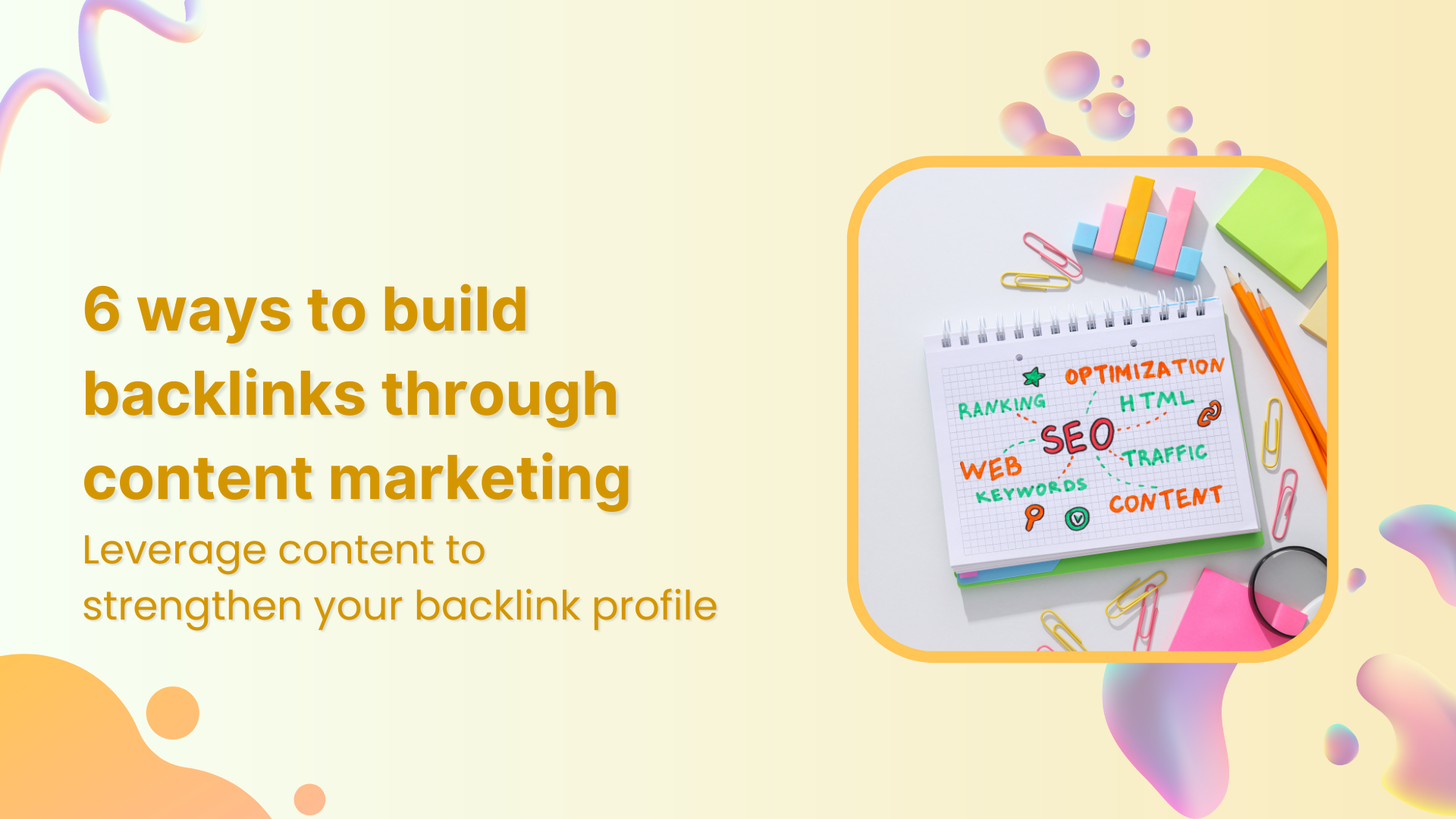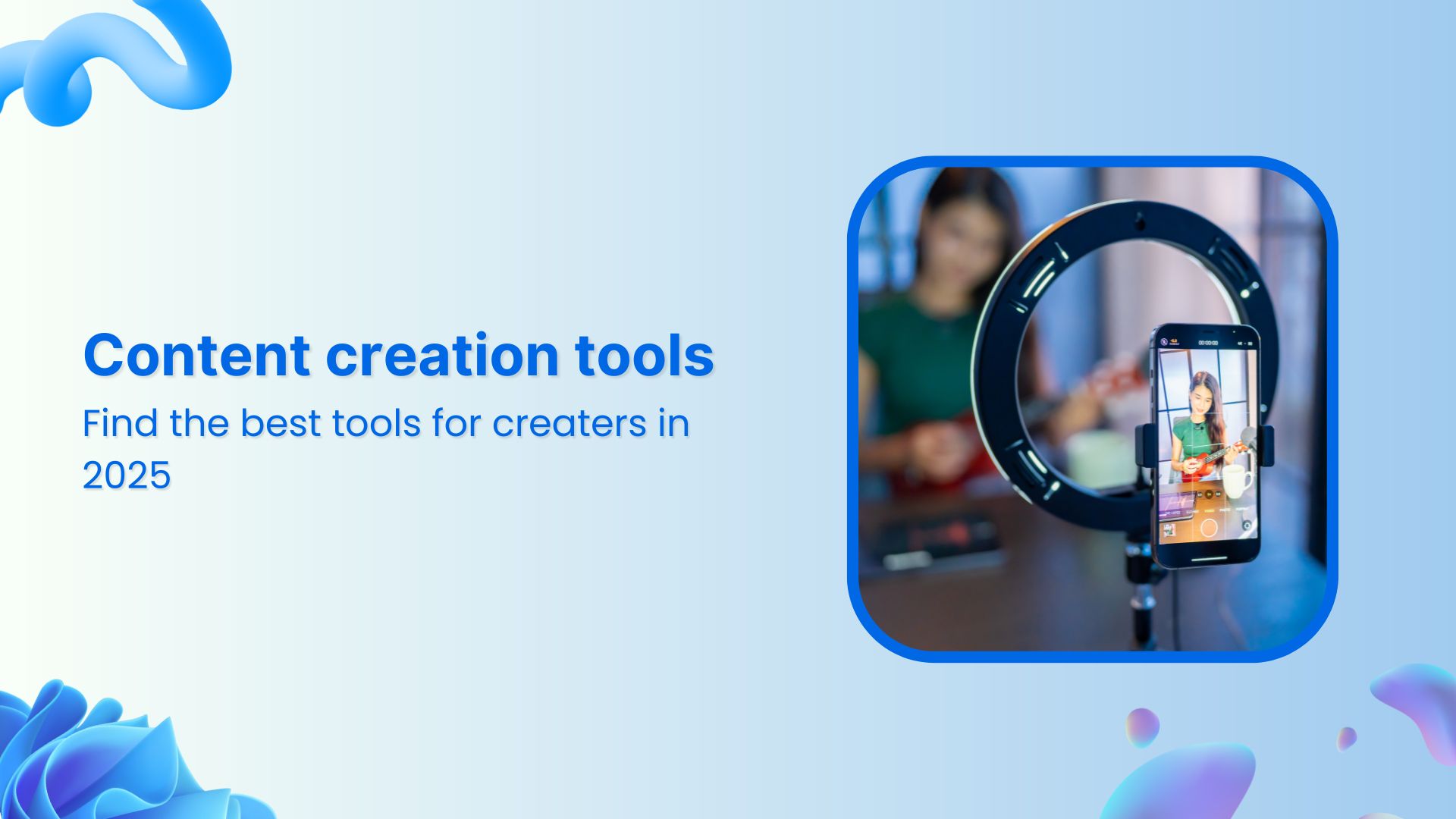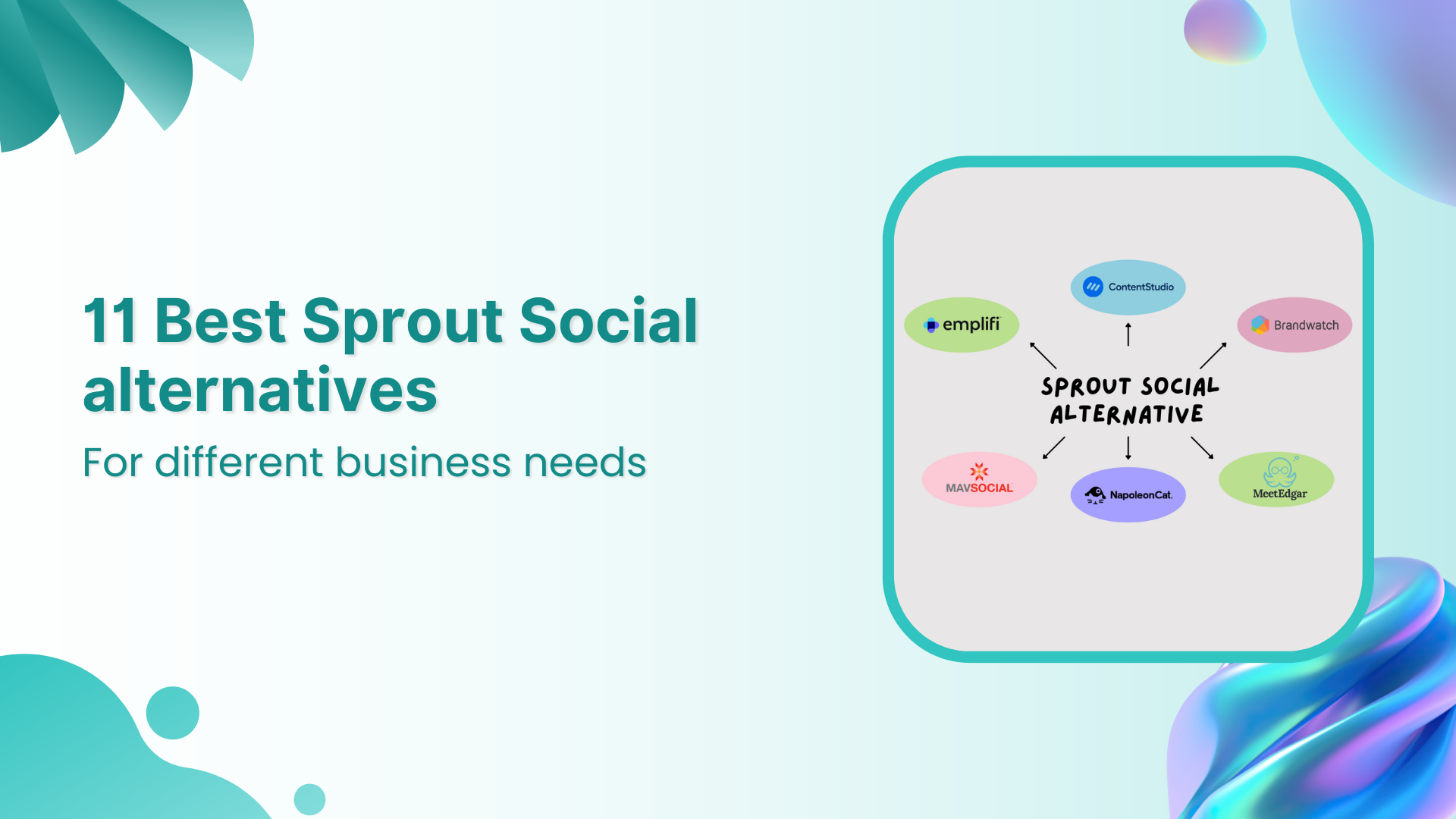🚀 Introducing Contentpen – Your AI-Powered content assistant!Join the waitlist.
Top 12 Kontentino alternatives for agencies and brands in 2025
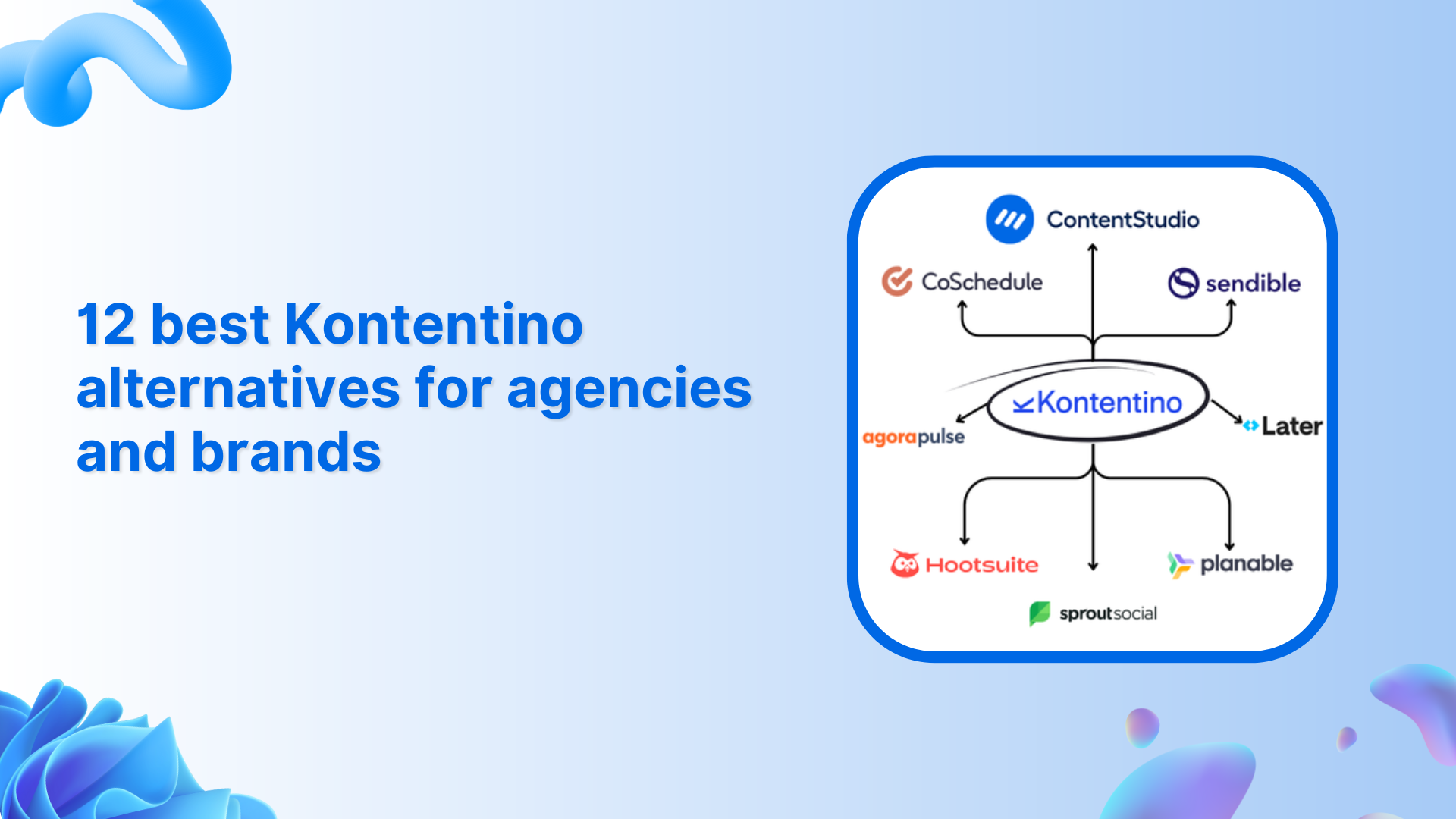
Managing multiple social media accounts feels like conducting an orchestra – every post, comment, and interaction needs perfect timing and coordination. While Kontentino alternatives serve many marketers and agencies, the fast-paced world of social media often demands more comprehensive solutions.
Social media managers and agencies need tools that streamline their workflows, enhance team collaboration, and deliver measurable results. Finding the right platform can alter chaotic content management into a well-oiled machine that consistently produces engaging social media campaigns.
In this blog, we’ll explore 15 powerful alternatives to Kontentino that can help you streamline your social media efforts, boost productivity, and meet your unique marketing goals.

From powerful analytics and intuitive interfaces to more affordable pricing options, there’s a solution out there that can perfectly match your agency’s unique needs.
Let’s explore these alternatives and find the ideal solution tailored to your agency’s needs!
Plan, schedule, share, and analyze content for 15+ social media channels.
Try ContentStudio for FREE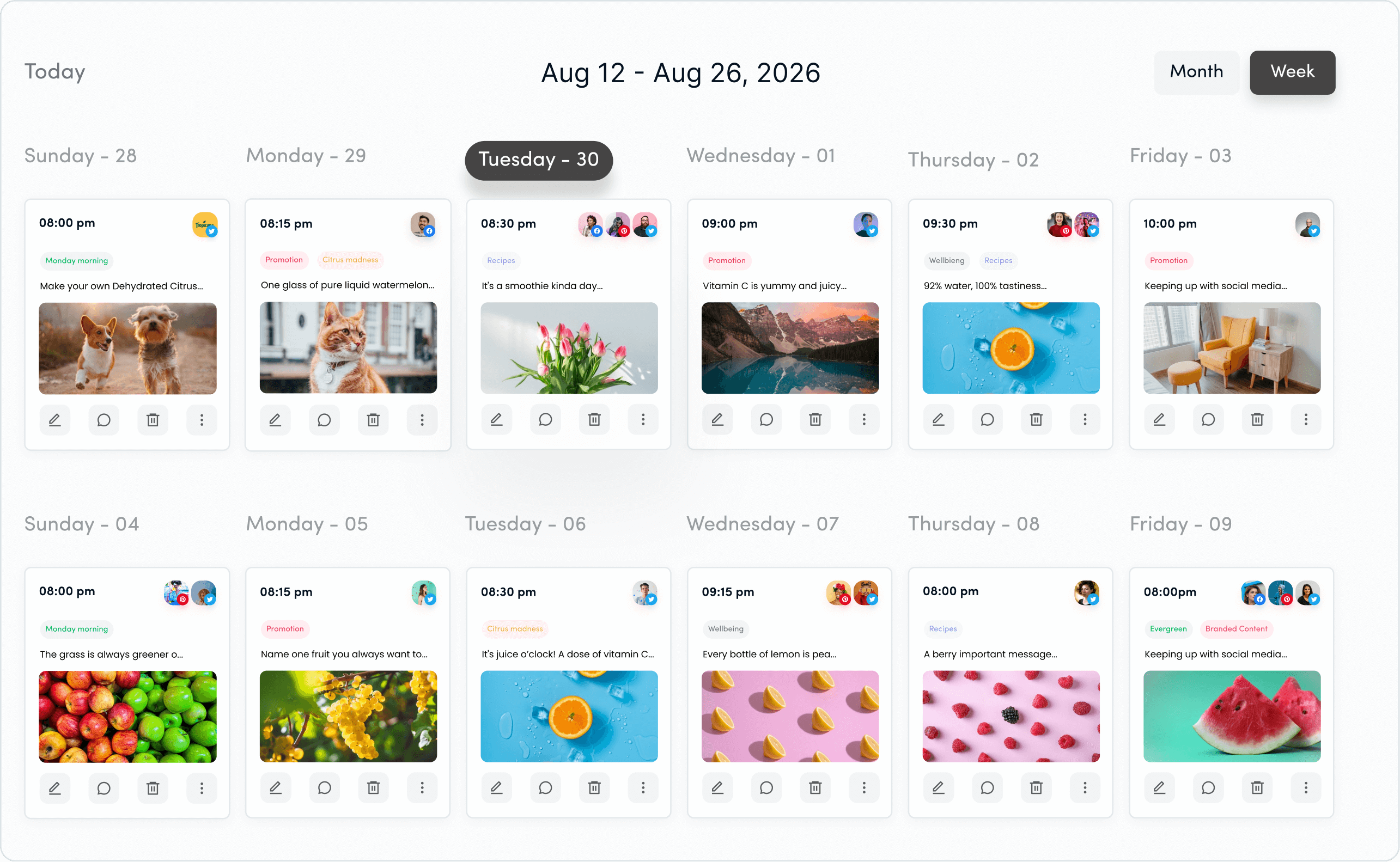
Here’s why businesses should consider a Kontentino alternative in 2025
While Kontentino is a reliable and widely used social media management platform and has also served many social media managers well in the past, the growing demands of modern digital marketing call for more sophisticated solutions.
There are several reasons why agencies and marketers may consider exploring alternative options:
Limited social media network support
Kontentino supports a more limited number of social media networks compared to other comprehensive management platforms. If your strategy involves managing multiple platforms like TikTok or YouTube, you might need a tool that offers more extensive integration options.
Basic analytics in higher pricing tiers
Although Kontentino provides valuable insights, its more detailed analytics are only accessible through higher-priced plans. For growing agencies with budget constraints, accessing advanced reporting tools without paying a premium can be a significant limitation.
Missing advanced functionalities
Kontentino lacks some advanced features that other platforms offer, such as version history, social listening, and an inbox management system. These tools are essential for many agencies that require detailed tracking and a more holistic view of their social media efforts.
Feature complexity
One of the challenges with Kontentino is the complexity of certain features. Instead of offering a streamlined content calendar, users must navigate content plans to organize their posts, which can be confusing for teams. Additionally, the absence of a social Inbox feature makes it harder to track and manage ongoing conversations, which could disrupt your workflow and slow down your response times.
High pricing
Another major drawback is the pricing structure. Kontentino’s basic plan starts at $59 per month, while the pro plan jumps to $240 per month. Considering the features offered, some users might feel that the pricing is steep compared to other platforms that provide more comprehensive options at lower costs.
Kontentino alternative #1: ContentStudio
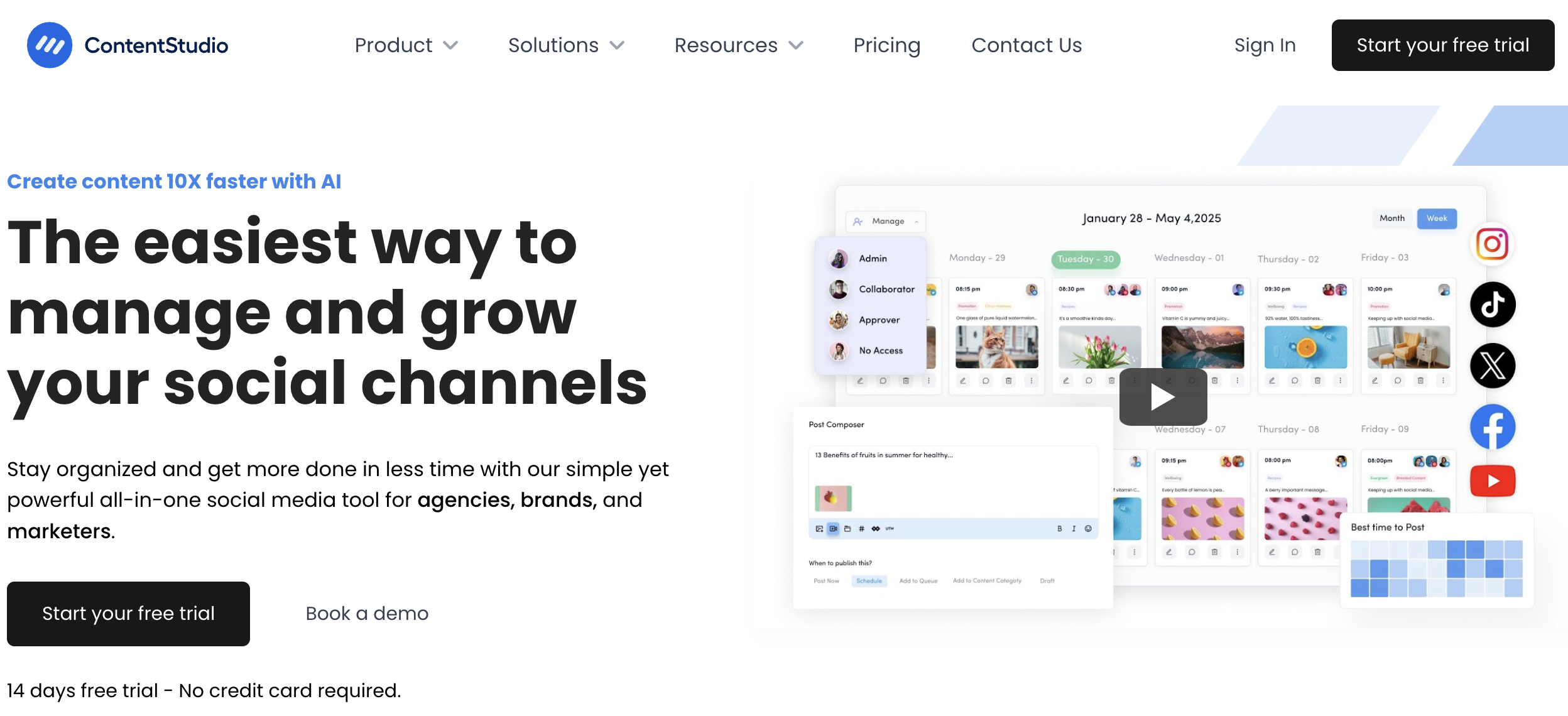
For agencies and marketers seeking a comprehensive solution, ContentStudio offers a robust platform that covers all aspects of social media management. Designed to cater to businesses of all sizes, it not only simplifies content scheduling and publishing but also brings efficiency to collaboration, making it an ideal choice for teams working on multiple campaigns.
While Kontentino provides excellent features for content planning and approvals, ContentStudio goes a step further with its more intuitive user interface, AI-powered tools, and a pricing structure that adapts to businesses at any stage of growth. It’s built with flexibility in mind, offering powerful integrations and innovative features that can scale as your needs evolve.
Pros:
- Cross-platform scheduling: Easily manage and schedule posts across different social platforms, helping you save time and stay organized.
- AI-powered content creation: Employ AI to craft compelling posts and captions, making content creation quicker and more creative without sacrificing quality.
- Comprehensive analytics: Track your social media performance with detailed insights, helping you refine your strategies and optimize engagement across channels.
- Streamlined collaboration: Simplify the approval process for teams and clients with an intuitive workflow that makes collaboration smoother and more efficient.
- Separate workspaces: Keep projects and clients organized with individual workspaces, ensuring clarity and focus in managing multiple campaigns.
- Optimized posting times: Automatically schedule your posts for the best times, boosting visibility by targeting when your audience is most active.
Cons:
- Lack of social listening features: While ContentStudio offers deep analytics, it currently lacks social listening capabilities, which may be a consideration for users looking to track brand mentions and conversations in real-time.
Pricing:
ContentStudio offers flexible pricing plans tailored to businesses of all sizes, with the ability to scale as you grow:
- Standard Plan: $19 per month (or $228 annually), providing management for up to 5 social accounts, 1 workspace, and 1 user. It includes essential features like AI content creation, publishing, scheduling, a visual content calendar, and social media analytics.
- Advanced Plan: $49 per month (or $588 annually), supporting up to 10 social accounts, 2 workspaces, and 2 users. It comes with advanced tools such as a social inbox, competitor analytics, campaign, and label analytics, content categories, and evergreen content recycling.
- Agency Unlimited Plan: Starting at $99 per month, this plan is designed for agencies managing multiple clients. It supports 25 social accounts, unlimited workspaces, and unlimited users. Additional social accounts can be added at a discounted rate as your needs expand.
Key Highlight – White-Label Solution:
ContentStudio also offers a white-label solution, enabling agencies to provide a fully branded experience to their clients. This feature eliminates third-party marks, enhances brand credibility, and ensures seamless user interaction, making it an excellent choice for businesses aiming to deliver a professional and tailored experience.
ContentStudio vs Kontentino
- Platform support: Both tools support major platforms like Facebook, Instagram, and LinkedIn. However, ContentStudio covers more ground with additional integrations, including YouTube and Pinterest, making it ideal for broader content distribution.
- AI-powered features: ContentStudio shines with AI-generated captions and recommendations, speeding up content creation. Kontentino lacks these AI tools and relies more on manual content planning.
- Content scheduling & workspaces: ContentStudio offers more advanced scheduling with optimal posting times and separate workspaces for managing clients. Kontentino’s scheduling is more visual but doesn’t provide the same level of automation or workspace management.
- Collaboration & approval: While both platforms offer content approval workflows, ContentStudio’s streamlined process is better suited for agencies managing larger teams, whereas Kontentino excels in visual content planning and approvals through its calendar.
- Analytics & reporting: ContentStudio provides in-depth, multi-platform analytics at all pricing levels, while Kontentino’s more advanced reporting features are only available in higher-priced tiers.
- Pricing: ContentStudio stands out as a budget-friendly option, with pricing starting at $19 per month and an agency plan at $99 for 25 social accounts. In contrast, Kontentino’s pricing starts at $59 per month for its basic plan and reaches $240 for its pro plan, which may not be as cost-effective for small to medium-sized agencies
Quick takeaway:
ContentStudio offers a streamlined experience for agencies and marketers aiming for an all-in-one solution in social media management. Its standout features include cross-platform scheduling, AI-driven content creation, and intuitive collaboration workflows, making it ideal for teams juggling multiple campaigns.
With separate workspaces and optimized posting tools, ContentStudio scales easily to meet your business needs. However, it lacks social listening capabilities, which might be essential for some. Its competitive pricing and robust platform support, including YouTube and Pinterest, give it an edge over Kontentino for those seeking versatility and cost-efficiency.
G2 rating:
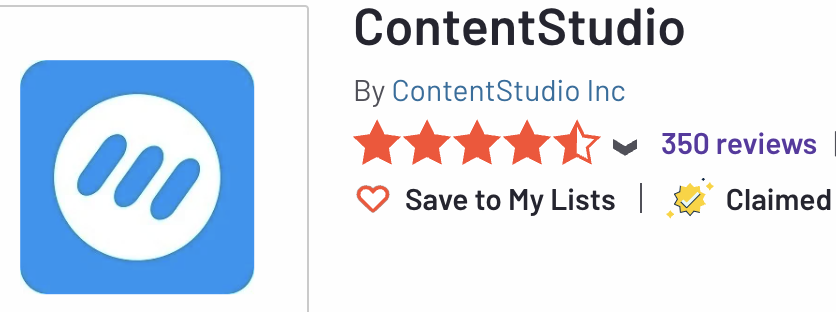
Kontentino alternative #2: Agorapuls
Agorapulse is a versatile social media management tool known for its unified social inbox, which consolidates messages from platforms like Facebook, Instagram, and Twitter. This feature allows teams to assign conversations, add internal comments, and streamline communication. The inbox assistant automates message organization based on keywords, making it easier to prioritize important conversations.
Agorapulse also supports cross-platform publishing across platforms like TikTok, YouTube, and LinkedIn (excluding Pinterest). It includes useful features like ad comment management and Google Business Profile review management. However, advanced features such as team collaboration and bulk scheduling are available only in higher-tier plans, limiting accessibility for smaller teams.
Pros:
- Unified inbox: Manage messages from multiple platforms in one place for streamlined communication.
- Inbox assistant: Automate inbox organization based on keywords, making message prioritization easier.
- Engagement tools: Includes ad comment and Google Business Profile review management to enhance interaction.
- Platform support: Supports major platforms like TikTok, YouTube, and LinkedIn (no Pinterest).
Cons:
- Limited collaboration and bulk scheduling: These features are restricted to higher-tier plans, which may limit smaller teams.
- No Pinterest scheduling: Agorapulse does not support Pinterest scheduling, which may be inconvenient for marketers focused on that platform.
Pricing:
Agorapulse offers a free version for one user managing three social accounts, making it accessible for smaller businesses. Paid plans start at $49 per user per month (billed annually), with a 30-day free trial available.
Agorapulse vs Kontentino
- Feature set: Agorapulse offers a more comprehensive range of features compared to Kontentino, including social inbox management, engagement tools, and ad comment monitoring, which Kontentino lacks.
- Reporting: Both platforms provide custom reports, but Agorapulse goes further with team performance and social media ROI reports, offering more insight into the overall effectiveness of your social strategy.
- Ease of use: While Agorapulse is feature-rich, Kontentino has a slight edge in user-friendliness due to its visual planning interface.
- Pricing: Agorapulse’s free plan makes it more accessible for small businesses, whereas Kontentino’s paid plans are more affordable for larger teams but lack a free option.
Related Article: 15 best Agorapulse alternatives for agencies and marketers
Quick takeaway:
Agorapulse shines with its unified inbox, automating message organization for seamless communication. Its cross-platform support and engagement tools are ideal for interaction-focused teams, though advanced features come with higher-tier plans. The free plan adds accessibility for small businesses.
G2 rating:

Kontentino alternative #3: Sendible
Sendible is a paramount social media management tool designed for businesses and agencies aiming to streamline their social media presence across multiple platforms. A standout feature is its broad range of supported networks, including YouTube, TikTok, Google Business Profile, and even WordPress. Sendible’s bulk scheduling and customizable posts for each platform make it an excellent choice for brands looking to manage high-volume content at scale.
In addition to its straightforward content calendar, Sendible offers inbox management with real-time comment monitoring and responses, ensuring that you never miss an important conversation. The platform also includes features like client dashboards, custom approval workflows, and built-in image editing, making collaboration and content creation more efficient.
Pros:
- Wide platform support: Manage content across LinkedIn, Google Business Profile, Facebook, Instagram, YouTube, TikTok, Twitter, and WordPress.
- Bulk scheduling & customization: Schedule posts in bulk and tailor content for each platform, improving efficiency without sacrificing personalization.
- Inbox management: Stay on top of conversations with real-time comment monitoring and reply features.
- Client dashboards & workflows: Collaborate seamlessly with custom approval workflows and detailed client dashboards.
- Image editing: Easily edit images within the platform to ensure your content is visually appealing.
Cons:
- Limited analytics in lower tiers: Like Kontentino, Sendible restricts advanced analytics to higher-tier plans, which could be a limitation for smaller teams.
- No budget tracking: Unlike Kontentino, Sendible does not offer built-in budget tracking, which could be a drawback for agencies managing paid campaigns.
Pricing:
Sendible’s entry-level plan starts at $25 per month (billed annually) for six social profiles and one user, with a 14-day free trial available on its creator and traction plans.
Sendible vs Kontentino
- Feature set: Sendible has advanced features like repeated content scheduling, real-time comment replies, and custom approval workflows. Kontentino, while strong in visual content planning, lacks these options.
- Reports: Both platforms provide similar reporting features, with reports locked behind higher-tier pricing plans. However, Kontentino has budget tracking (available as a paid add-on), which Sendible does not offer.
- Ease of use: Kontentino has the edge in ease of use thanks to its intuitive visual interface, which some users may find simpler to navigate.
- Pricing: Sendible’s starting price is comparable, but Kontentino is generally more affordable per user, making it a better option for agencies with larger teams.
Quick takeaway:
Sendible is perfect for agencies managing diverse platforms with bulk scheduling and real-time inbox management. Its custom workflows and built-in image editing streamline collaboration, though advanced analytics and budget tracking are limited in lower tiers.
G2 rating:
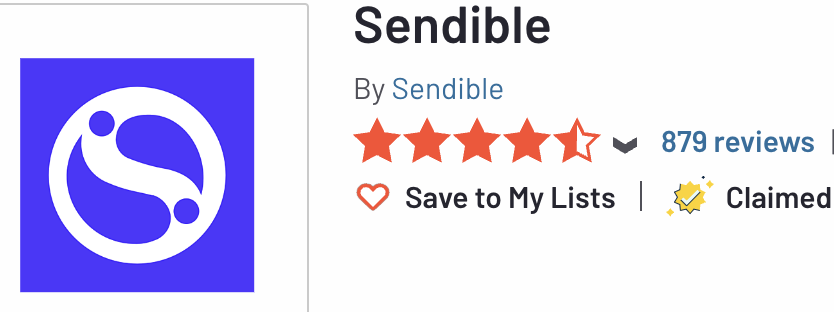
Kontentino alternative #4: Sprout Social
Sprout Social is a powerful social media management platform that integrates advanced features like analytics, scheduling, engagement, and social listening into one streamlined solution. What sets Sprout Social apart is its social listening functionality, which allows businesses to track customer conversations, analyze audience sentiment, and monitor consumer behavior.
In addition to social listening, Sprout Social offers a comprehensive social inbox, allowing you to manage and respond to comments across multiple social accounts from one place. It also includes features such as competitive analysis, a built-in CRM, and review management, making it a well-rounded platform for businesses looking to enhance their social media strategy and engagement.
Pros:
- Social listening: Track customer conversations, monitor sentiment, and gain insights into audience behavior, all in one place.
- Unified inbox: Respond to comments and messages from multiple social platforms through a single, easy-to-use inbox.
- Built-in CRM & competitive analysis: Manage customer relationships directly within the platform and monitor competitors to stay ahead of the game.
- Review management: Stay on top of customer reviews across platforms, ensuring a consistent and responsive brand presence.
Cons:
- High cost for additional users: While the base plan starts at $249/month for one user, adding more users can quickly become expensive, with additional costs of $199 to $349 per user, depending on the plan.
- Complex interface: Sprout Social’s vast feature set comes with a learning curve, making it more challenging to use compared to simpler tools like Kontentino.
Pricing:
Sprout Social’s plans start at $249/month for one user, with each additional user costing $199 to $349/month, depending on the package. A 30-day free trial is available for all plans except the enterprise option.
Sprout Social vs Kontentino
- Feature set: Sprout Social offers a more extensive feature set, with advanced tools like social listening, a CRM, and review management—features that Kontentino lacks.
- Reports: Sprout Social excels with comprehensive reporting, including competitive analysis and team efficiency reports, whereas Kontentino’s reports are more limited in scope.
- Ease of use: Kontentino wins in terms of simplicity. Sprout Social, with its vast capabilities, has a steeper learning curve and can be overwhelming for new users.
- Pricing: Sprout Social is significantly more expensive, especially when adding multiple users. Kontentino remains more affordable, particularly for teams with a tighter budget.
Related Article: Top 10 Alternatives to Sprout Social in 2025
Quick takeaway:
Sprout Social is a robust choice for businesses focused on in-depth analytics and social listening, with a unified inbox and CRM to boost engagement and strategy. Its competitive analysis and review management make it comprehensive, though its high cost per user and complex interface might be challenging for smaller teams.
G2 rating:

Kontentino alternative #5: Later
Later is an all-in-one social media management platform known for its robust reporting capabilities, particularly for Instagram and TikTok. With Later, you can dive deep into the performance of Instagram posts, stories, hashtags, and reels, gaining valuable insights into audience behavior and engagement.
On TikTok, the platform tracks key metrics like engagement, weekly and monthly growth, and post performance, while also providing detailed audience demographics. In addition, Later’s reporting covers other networks such as Pinterest and Twitter, making it a comprehensive tool for tracking your social media performance.
Pros:
- In-depth reporting for Instagram and TikTok: Analyze posts, stories, reels, and audience demographics across Instagram and TikTok with detailed reports that help you optimize your strategy.
- Linkin.bio management: Easily manage and optimize your Linkin.bio for Instagram and TikTok to drive traffic from social platforms to your website or landing pages.
- Comment management: Engage with your audience by managing and responding to Instagram and TikTok comments directly within the platform.
- Hashtag suggestions: Discover relevant hashtags to increase the visibility of your posts and reach a broader audience.
Cons:
- Limited inbox management: The inbox management feature is only available for Instagram and TikTok, limiting its utility for brands active on other platforms.
- Restricted AI-powered caption writing: While Later offers an AI-powered caption writer, it’s reserved exclusively for Instagram, leaving other platforms without this time-saving feature.
Pricing:
Later’s pricing starts at $33.33 per month (billed annually), with a 14-day free trial available for all plans, making it a more affordable option for businesses with a tighter budget.
Later vs Kontentino
- Feature set: Later offers a more versatile set of features, including Linkin.bio management and inbox management for Instagram and TikTok, but lacks Facebook Ads support, which Kontentino offers.
- Reports: Later provides more comprehensive reporting, especially for audience analysis and TikTok performance, areas where Kontentino falls short.
- Ease of use: Kontentino ranks slightly higher in ease of use, thanks to its straightforward interface.
- Pricing: Later is generally more affordable, especially for small to mid-sized teams.
Related Article: Top 15 best Later alternatives for your business in 2025
Quick takeaway:
Later is ideal for brands focusing on Instagram and TikTok, with in-depth reporting, Linkin.bio management, and comment engagement features. While it shines in audience insights and hashtag suggestions, inbox management and AI captions are limited to select platforms. Its affordable pricing makes it a great choice for budget-conscious teams.
G2 rating:
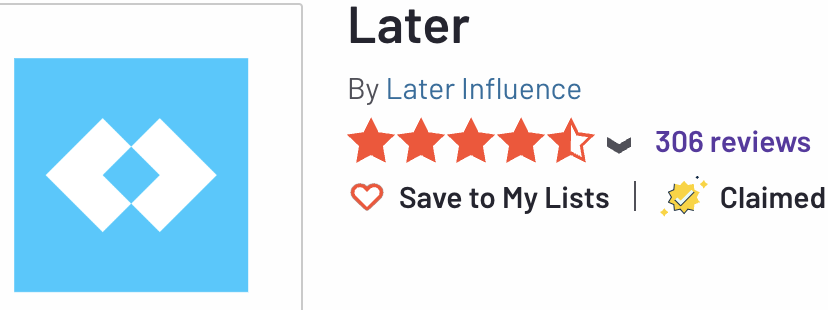
Kontentino alternative #6: CoSchedule
CoSchedule is a user-friendly social media management platform that emphasizes post scheduling and work management features, making it a great tool for teams looking to streamline both content and project management. Its content calendar allows users to bulk-schedule posts across various platforms and organize them efficiently using color-coded labels for better clarity and organization.
In addition to scheduling, CoSchedule offers several useful work management features, including task templates, recurring tasks, and the option to add project attachments. These features help teams stay on top of their content strategy while ensuring all tasks are completed on time. Other standout functionalities include a headline generator, an email subject line tester, and an AI writing assistant to help craft compelling content that resonates with your audience.
Pros:
- Post scheduling with content calendar: Easily schedule and organize posts across multiple platforms in bulk, using color-coded labels for clear organization.
- Work management tools: Manage tasks efficiently with features like task templates, recurring tasks, and project attachments to streamline workflows.
- Built-in writing tools: Utilize CoSchedule’s headline generator, email subject line tester, and AI writing assistant to enhance your content’s impact.
Cons:
- Limited platform support: CoSchedule supports fewer social platforms, which may restrict brands looking to manage a wider range of networks.
Pricing:
CoSchedule offers a free plan for one user with two social profiles, while paid plans start at $29 per user per month (billed annually) and support up to 10 social accounts with 10 users.
CoSchedule vs Kontentino
- Feature set: CoSchedule shines with its work management tools, offering features like project discussions, recurring tasks, and templates. It also has unique content creation tools like a headline generator, email subject line tester, and AI writing assistant. However, Kontentino offers Facebook Ads support, which CoSchedule lacks.
- Reports: Kontentino delivers Facebook ads and budget analysis, while CoSchedule provides best time to post suggestions and team performance reports.
- Ease of use: Kontentino is easier to use, offering a more streamlined experience, especially for smaller teams.
- Pricing: CoSchedule’s free plan is attractive, but Kontentino’s paid plans are more affordable, particularly for growing teams.
Quick takeaway:
CoSchedule is a great fit for teams that prioritize content and task management, with its scheduling calendar, work management tools, and built-in writing aids. Its unique features, like the headline generator and email teste, enhance content quality, though limited platform support may be a drawback for some. The free plan offers a solid starting point for small teams.
G2 rating:
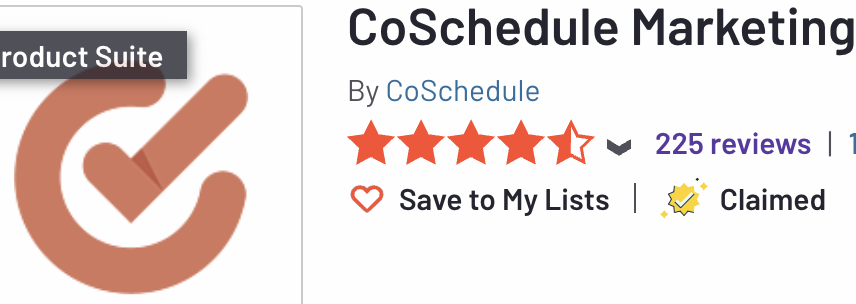
Kontentino alternative #7: Hootsuite
Hootsuite is a comprehensive social media management platform that handles post scheduling, social media monitoring, and social advertising, making it a strong all-in-one solution. One of Hootsuite’s standout features is its robust reporting and analytics capabilities.
With Hootsuite, you can generate detailed reports across multiple platforms, delivering side-by-side comparisons that help you identify which channels are performing best for your business.
Hootsuite also excels in competitive and industry benchmarking, allowing you to compare your social media performance with that of competitors or other companies in your industry. The platform further supports social media teams with features like team productivity reports, social advertisement analytics, and social listening tools to help brands stay ahead of trends and improve overall performance.
Pros:
- Comprehensive reports and analytics: Gain detailed insights with multi-platform reports, side-by-side comparisons, and competitive benchmarking.
- Social listening and advertisement analytics: Track audience conversations and measure the success of your paid campaigns to optimize your social strategy.
- Hootsuite Analyze team performance to ensure your social media operations are running smoothly.
Cons:
- High pricing: Hootsuite’s advanced features come at a premium price, which may be a limitation for smaller teams or businesses on a budget.
- Occasional bugs: Users have reported issues with scheduled posts not always publishing as expected, which can disrupt social media campaigns.
Pricing:
Hootsuite’s pricing starts at $99 per month (billed annually) for one user managing up to ten social accounts. The platform also offers a 30-day free trial for the Professional and Team plans.
Hootsuite vs Kontentino
- Feature set: Hootsuite offers a more comprehensive set of features, including content curation, social inbox management, and contact management, all of which are absent in Kontentino.
- Reports: Hootsuite provides more extensive reporting capabilities, offering competitive benchmarking, team productivity reports, and best time to post suggestions, whereas Kontentino’s reports are more limited.
- Ease of use: While Hootsuite is packed with features, Kontentino scores higher in ease of use, especially for teams looking for a more straightforward platform.
- Pricing: Hootsuite’s plans come at a higher price point, while Kontentino is significantly more affordable across the board, making it a better option for budget-conscious businesses.
Related Article: 15 best Hootsuite alternatives for marketing agencies in 2025
Quick takeaway:
Hootsuite is ideal for brands seeking in-depth reporting, competitive benchmarking, and social advertising insights. Its robust analytics and social listening tools are powerful for optimizing strategy, though the premium pricing and occasional bugs may be drawbacks for smaller teams. The 30-day trial provides a risk-free opportunity to explore its full feature set.
G2 rating:

Kontentino alternative #8: Planable
Planable is a social media management tool that focuses on scheduling and team collaboration. Beyond social posts, it supports collaboration on ad copy, emails, newsletters, blogs, and content briefs, making it ideal for content-heavy teams.
Planable’s calendar allows for easy drag-and-drop scheduling across multiple platforms, while its custom approval workflows offer flexibility for teams needing multiple layers of content review.
The platform also includes useful features like an AI-powered writing assistant, version control, and built-in video and image editing tools, all aimed at streamlining content creation and approval processes.
Pros:
- Comprehensive collaboration: Work on various types of content, with feedback, role assignments, and internal notes to streamline teamwork.
- Flexible approvals: Choose from multiple approval workflows, allowing for tailored content review processes.
- Intuitive scheduling: Schedule posts across multiple platforms using an easy drag-and-drop calendar with color-coded labels.
- AI-powered writing: Create or improve content using an integrated AI assistant for faster, more creative writing.
Cons:
- No social listening: Planable lacks social listening and monitoring, limiting its capability for tracking brand conversations.
- Limited CMS integration: It doesn’t integrate with CMS platforms, which might be an issue for teams managing web content alongside social media.
Pricing:
Planable’s free version supports up to 50 posts. Paid plans start at $11 per user per month (billed annually) and scale based on users and workspaces.
Planable vs Kontentino
- Supported networks: Planable supports more social platforms and offers collaboration on blogs, newsletters, and more, making it versatile for content teams.
- Approvals: Planable’s four approval workflows provide more options than Kontentino’s two, making it ideal for teams needing detailed review processes.
- Scheduling posts: Planable allows recurring posts and simultaneous scheduling across multiple channels, which Kontentino doesn’t offer as easily.
- Pricing: Planable is more affordable, with flexible pricing based on the number of users and workspaces.
Quick takeaway:
Planable is ideal for collaborative teams, offering flexible approvals, drag-and-drop scheduling, and AI writing tools. It’s affordable and versatile for content-heavy workflows, though it lacks social listening and CMS integration.
G2 rating:
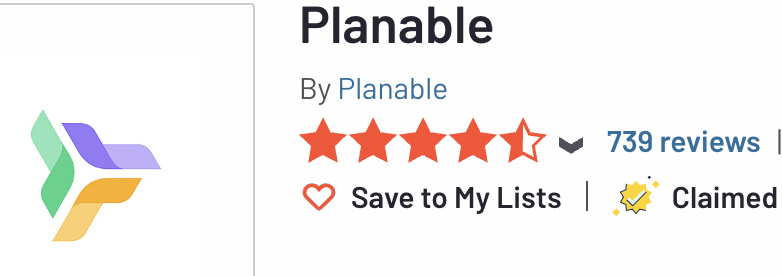
Kontentino alternative #9: Crowdfire
Crowdfire is an emerging social media management tool that offers a user-friendly experience with automation features to help create and schedule posts tailored for different social networks. One of its standout features is the team inbox, which helps you manage all mentions and comments in one place, allowing you to respond instantly and maintain strong customer service.
This makes Crowdfire a solid option for brands looking to enhance engagement without spending too much time manually tracking social interactions.
Compared to Kontentino, Crowdfire places a stronger emphasis on customer service with its mention-tracking and team inbox features, giving you more control over social interactions.
Pros:
- Post automation: Easily create and schedule posts across multiple social networks, customizing them for each platform.
- Team inbox for mentions: Track and manage all mentions and comments from a single inbox, ensuring prompt responses and better customer service.
- Affordable pricing: Crowdfire offers a free plan and affordable paid options, making it accessible to smaller businesses and teams.
Cons:
- Limited scheduling features: Even on paid plans, scheduling options are limited compared to other tools, which may restrict social media activity for larger teams.
- Account limits: You can only link five accounts on the Plus plan, 10 on the Premium plan, and 25 on the VIP plan, which may not be enough for growing businesses.
- Fewer integrations: Crowdfire supports fewer platforms, including only Twitter, Facebook, Instagram, LinkedIn, and Pinterest, missing out on newer platforms like TikTok and Mastodon.
- Lack of live chat support: Crowdfire doesn’t offer live chat or immediate customer support, limiting your options to email or scheduled demo calls when troubleshooting issues.
Pricing:
Crowdfire offers a free plan, and its paid plans start at $9.99 per month (billed annually) for the Plus plan, making it an affordable option compared to Kontentino.
Crowdfire vs Kontentino
- Feature set: Crowdfire emphasizes automation and a team inbox for mentions and comments, giving it an edge in customer service management. However, Kontentino offers more advanced scheduling and reporting features.
- Scheduling limitations: Crowdfire’s scheduling options are limited even on paid plans, while Kontentino provides more flexibility for managing multiple posts and social accounts.
- Integrations: Crowdfire supports fewer platforms, lacking integration with newer networks like TikTok and Mastodon, which Kontentino does not support either, but the limitation is more significant for Crowdfire.
- Pricing: Crowdfire is more affordable, offering a free plan and lower-cost paid plans compared to Kontentino, making it a budget-friendly alternative.
Quick takeaway:
Crowdfire is a budget-friendly option for brands focused on engagement, with features like post automation and a team inbox for efficient customer service. It’s limited scheduling and platform support may not suit larger teams, but the affordable pricing and user-friendly interface make it ideal for smaller businesses.
G2 rating:
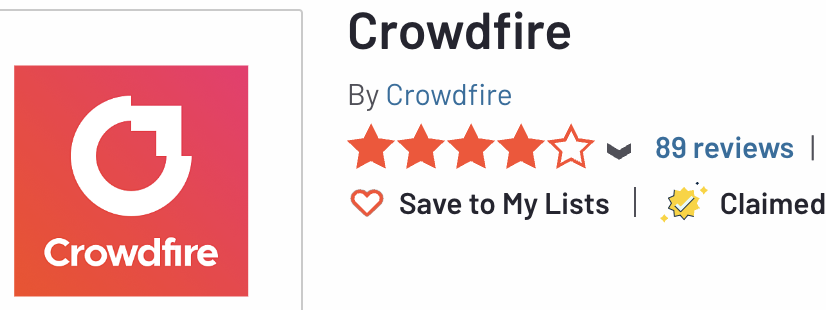
Kontentino alternative #10: MeetEdgar
MeetEdgar is a well-known alternative to Kontentino, offering strong social media management capabilities with integrations for seven popular social platforms. One of its standout features is the ability to repurpose evergreen content, helping businesses maximize the value of their content by re-sharing it at optimal times.
MeetEdgar’s custom time slots allow users to schedule posts at the best times for engagement, while its automation tools enable businesses of all sizes to streamline their social media strategies.
In comparison to Kontentino, MeetEdgar is more cost-effective with two affordable pricing plans. Its unlimited post scheduling, weekly automation, and customizable content categories make it a strong contender for businesses looking for an efficient and budget-friendly tool.
Pros:
- Evergreen content repurposing: Automatically re-share your evergreen posts to keep your content fresh and relevant, maximizing its impact over time.
- Customizable scheduling: Set custom time slots to post content at optimal times, ensuring your audience sees your content when they’re most active.
- Unlimited post scheduling: Schedule as many posts as you need, helping businesses plan long-term social media strategies without restrictions.
Cons:
- Limited integrations: MeetEdgar supports only seven platforms, which may be limiting for businesses looking to manage a broader range of social networks.
- High pricing for small businesses: Despite offering good features, the $29.99 per month starting price may feel steep compared to other alternatives with similar or better functionality at a lower cost.
Pricing:
MeetEdgar offers two affordable plans, starting at $29.99 per month, with unlimited post scheduling and weekly automation, making it a cost-effective solution for small to mid-sized businesses.
MeetEdgar vs Kontentino
- Feature set: MeetEdgar excels with evergreen content repurposing and unlimited post scheduling, making it ideal for businesses focused on long-term content automation. However, Kontentino offers more advanced collaboration, content approval workflows, and detailed reporting, which are beneficial for teams managing multiple clients or campaigns.
- Platform support: While MeetEdgar supports only seven platforms, Kontentino offers broader platform integrations, making it a better choice for agencies that need to manage a wider range of social networks.
- Ease of use: Both platforms are user-friendly, but Kontentino’s visual content calendar and approval workflows give it an edge for larger teams that prioritize streamlined content planning.
- Pricing: MeetEdgar is more affordable overall, but some users may find the features limited compared to similarly priced alternatives. Kontentino’s higher pricing includes more robust features for content planning and collaboration.
Quick takeaway:
MeetEdgar is a cost-effective choice for small to mid-sized businesses focusing on long-term content automation, with standout features like evergreen content repurposing and unlimited scheduling. While its platform support is limited, the customizable posting times and automation tools make it ideal for efficient, budget-friendly social media management.
G2 rating:
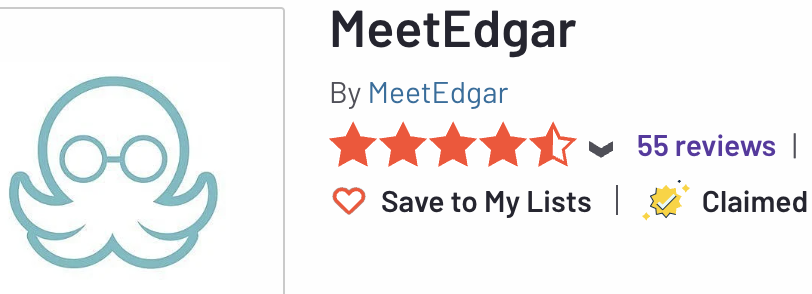
Kontentino alternative #11: Zoho Social
Zoho Social is a popular social media management tool, favored by agencies, remote teams, and individual marketers. It offers flexible post-scheduling, a content calendar, and a monitoring dashboard to keep workflows organized and up-to-date. Zoho Social supports a wide range of platforms, including Facebook, Twitter, LinkedIn, Instagram, Pinterest, Google Business Profile, and Threads.
With advanced features like lead generation ads for Facebook and LinkedIn, Zoho Social allows users to run targeted ads and engage leads directly from the platform. It also offers more affordable pricing plans, making it an attractive option for businesses seeking a budget-friendly, feature-rich solution.
Pros:
- Flexible post scheduling and social calendar: Easily schedule posts and visualize your content strategy with an intuitive calendar, keeping your workflows organized.
- Monitoring dashboard: Stay up-to-date with relevant conversations and trends that impact your business through a centralized monitoring hub.
- Lead generation ads: Run Facebook and LinkedIn lead generation ads directly from the platform, making it easy to engage with and convert potential customers.
Cons:
- Limited post-scheduling options: Some advanced scheduling features, such as bulk imports and post recycling, are available only in higher pricing plans.
- Limited social media integrations: While Zoho Social supports many platforms, some features (like Instagram Story scheduling) may be limited in functionality depending on the plan.
Pricing:
Zoho Social’s pricing starts at $10 per month for one account per social network, making it a much more affordable option compared to Kontentino, which starts at $83 per month for 10 social profiles. Zoho Social also offers a free plan for individuals or small teams.
Zoho Social vs Kontentino
- Feature set: Zoho Social provides more advanced features like lead generation ads for Facebook and LinkedIn, which Kontentino lacks. Both tools offer post-scheduling, but Zoho Social provides more flexibility with features like post recycling, RSS publishing, and Instagram first comment scheduling.
- Social media support: Zoho Social supports a broader range of platforms, including Threads and Google Business Profile, making it a better option for brands that manage multiple platforms.
- Pricing: Zoho Social offers more budget-friendly pricing, starting at just $10 per month, while Kontentino’s pricing is significantly higher, starting at $83 per month.
Quick takeaway:
Zoho Social is a budget-friendly solution for agencies and teams, with flexible scheduling, lead-generation ads, and a robust monitoring dashboard. Its support for multiple platforms and advanced features make it ideal for brands managing diverse social channels, though some scheduling features are limited to higher plans.
G2 rating:
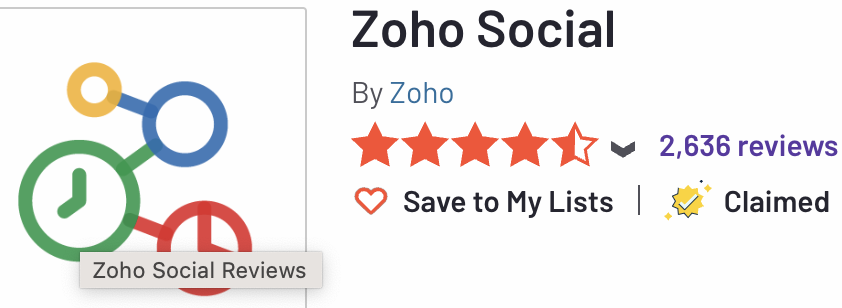
Kontentino alternative #12: Social Champ
Social Champ is an all-in-one social media management tool, perfect for businesses of any size. It offers features for content creation, publishing, and managing conversations, all in one simple dashboard.
The platform’s calendar lets you easily view and manage posts, while the social inbox ensures you never miss a comment or mention. With advanced analytics and bulk scheduling, managing your content becomes seamless.
Social Champ also includes tools like the first comment feature, the best time to post suggestions and content approvals. Its Champ AI Suite offers AI-driven tools for creating images, captions, and analyzing post sentiment.
Pros:
- Comprehensive calendar and inbox: Manage all scheduled, published, and failed posts through a visual calendar and ensure you never miss a conversation with the social inbox.
- AI-driven tools: Use AI to enhance your content strategy with tools like AI Imaginator for text-to-image conversion, AI Content Wizard for caption creation, and sentiment analysis for tone checks.
- Advanced scheduling and reporting: Easily schedule posts in bulk and download analytics reports in PPT or PDF format, keeping your strategy data-driven and efficient.
Cons:
- Learning curve for advanced features: The platform’s extensive feature set might require some time to fully explore and utilize, especially for smaller teams or new users.
- Limited custom integrations: While Social Champ supports many mainstream platforms, custom integrations with other business tools may be limited.
Pricing:
Social Champ’s pricing starts at $29 per month, and it also offers an exclusive free plan, making it a more affordable option compared to many other social media management tools on the market.
Social Champ vs Kontentino
- More supported platforms: Social Champ supports eight mainstream social media networks, including newer platforms like TikTok and Mastodon, while Kontentino’s range is more limited.
- Advanced features: Social Champ excels with its AI-powered features like the AI Imaginator, AI Content Wizard, and sentiment analysis, as well as tools like bulk scheduling and content approvals.
- Better pricing: Social Champ’s pricing starts at $29 per month, and it offers a free plan, providing a cost-effective solution for businesses of all sizes, compared to Kontentino’s higher starting price of $83 per month.
Quick takeaway:
Social Champ stands out as a comprehensive alternative to Kontentino. It offers robust scheduling, AI-driven tools for content creation and analysis, and a budget-friendly pricing structure starting at $29 per month. With support from platforms like TikTok and Mastodon, Social Champ makes social strategy management efficient and accessible for businesses of all sizes.
G2 rating:

Conclusion:
When it comes to social media management, finding the right tool to suit your needs is essential. While Kontentino excels in visual content planning, alternatives like ContentStudio, Agorapulse, Sendible, and Sprout Social offer unique features that cater to different business needs.
Ultimately, the choice depends on your specific needs, whether it’s pricing, collaboration tools, or ease of use.
Ultimately, the right tool is the one that fits your budget and social media strategy needs. Explore these alternatives and find the best option that can enhance your social media management.
FAQs
1. Which tool is the most affordable alternative to Kontentino?
ContentStudio and Sendible are the most affordable alternatives, with plans starting at $25 per month. They offer a wide range of features suitable for small to medium-sized businesses while maintaining budget-friendly pricing.
2. Which platform is best for agencies managing multiple clients?
Sendible and ContentStudio are great for agencies, offering separate workspaces, advanced collaboration tools, and the ability to manage multiple social accounts. Sendible’s bulk scheduling and customizable posts for each platform also add efficiency for agencies working at scale.
3. Which tool offers the best analytics and reporting?
Sprout Social and ContentStudio both offer in-depth analytics. Sprout Social excels in detailed reporting, including competitive analysis and audience insights, while ContentStudio provides comprehensive multi-platform analytics at all pricing levels.
4. What’s the best tool for AI-powered content creation?
ContentStudio is the leading platform for AI-powered content creation, with features like AI-generated captions and content recommendations that speed up the process and enhance creativity.
Subscribe to our weekly newsletter!
Join over 14,500+ agencies and brands to stay informed with weekly social media updates, blogs, strategies, and expert tips right into your inbox!
